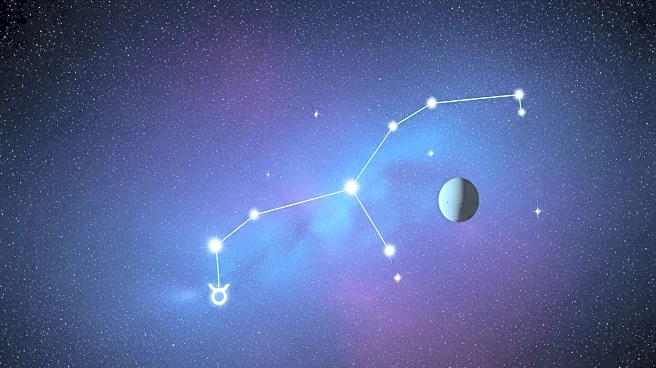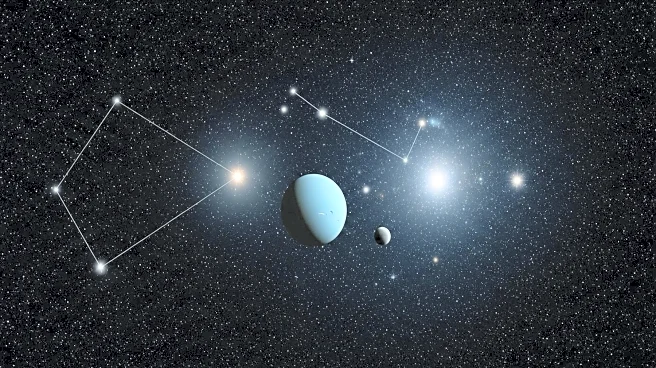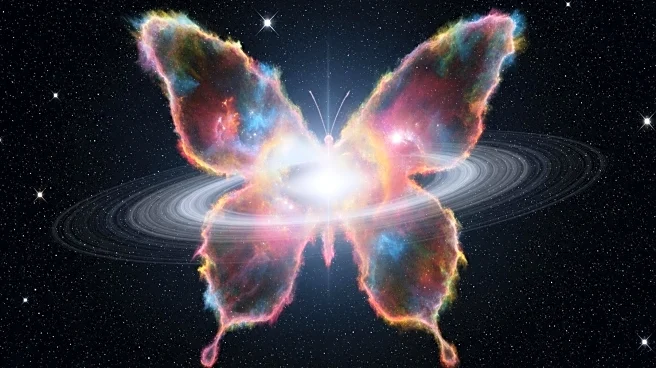What's Happening?
Astronomers are encouraging stargazers to observe the planetary nebula NGC 6781, located in the constellation Aquila. This nebula, a near-perfect expanding gas bubble approximately 2 light-years in diameter, is the result of a Sun-like star's death. Through a 6-inch telescope, observers can see an irregular, oval-shaped nebula with a darker center. Larger telescopes reveal detailed ring structures, including a brighter southern rim and a fainter northern edge. Despite Aquila's lack of prominent celestial objects, NGC 6781 offers a visual treat for astronomy enthusiasts.
Why It's Important?
Observing NGC 6781 provides amateur astronomers with an opportunity to study the life cycle of stars and the formation of planetary nebulae. This nebula's visibility in the night sky allows for practical engagement with astronomical phenomena, fostering interest and education in the field. The detailed observations possible with larger telescopes can enhance understanding of nebular structures and the processes involved in star death and gas expansion. Such observations contribute to the broader scientific knowledge of stellar evolution and the dynamics of celestial objects.











